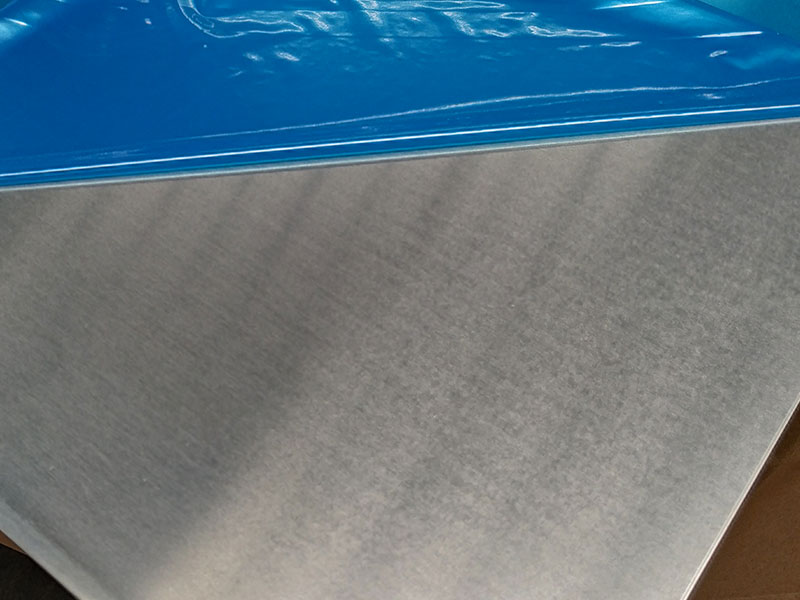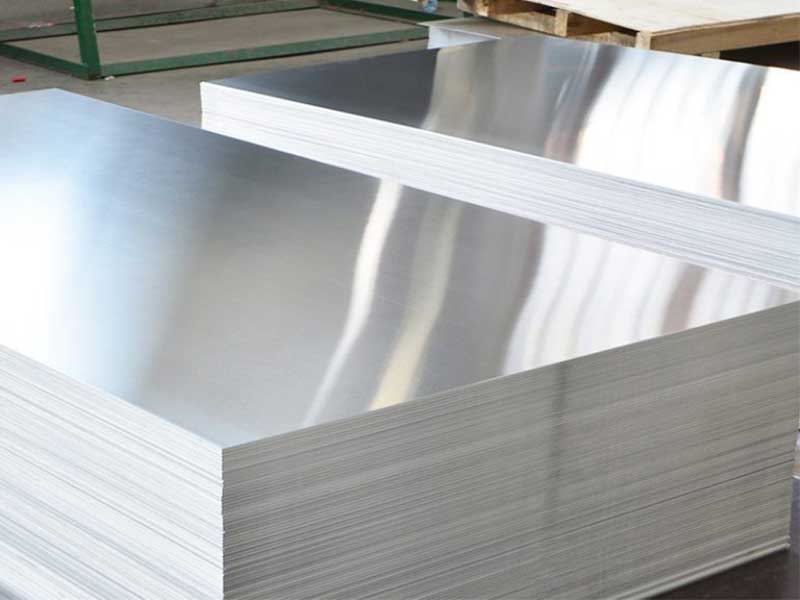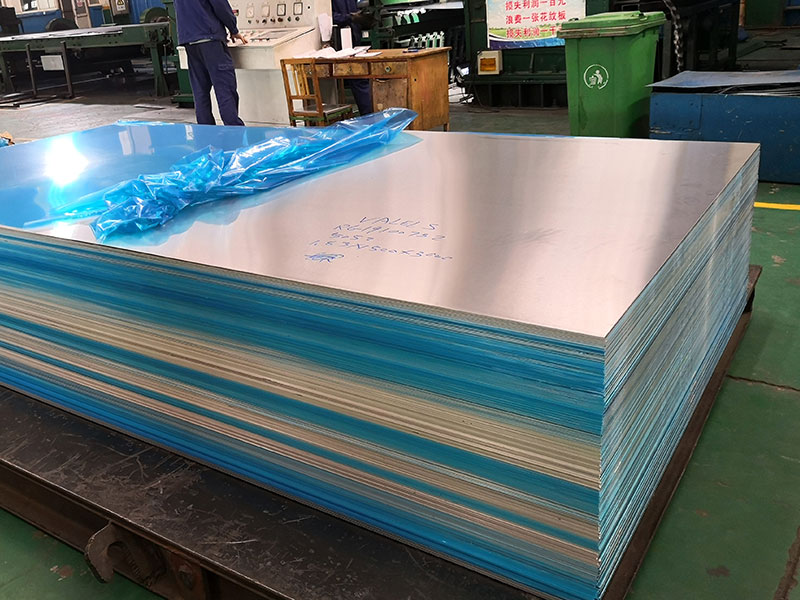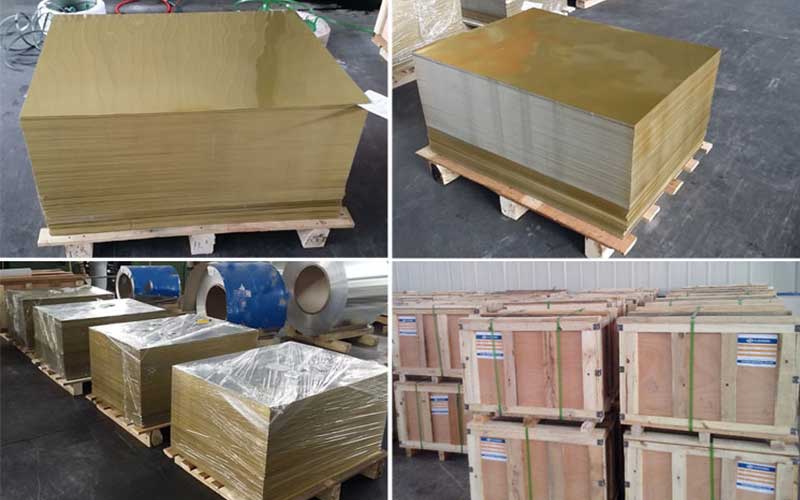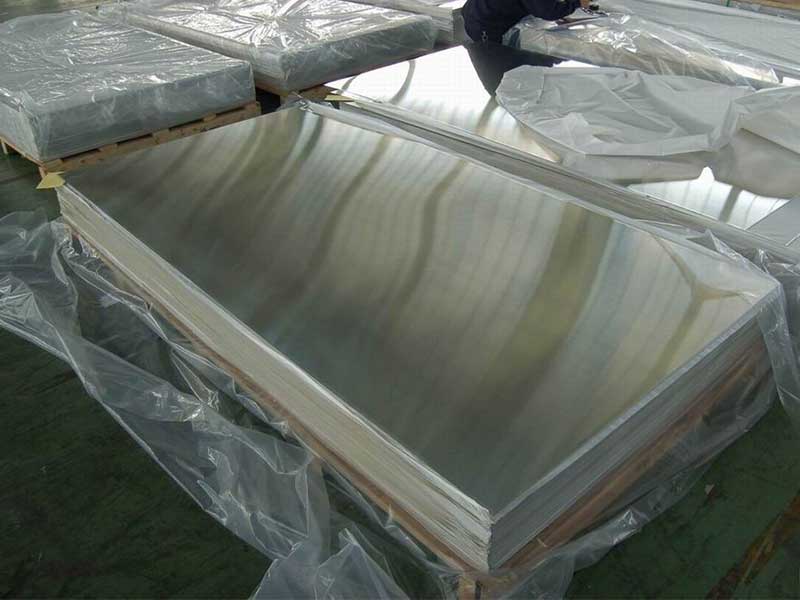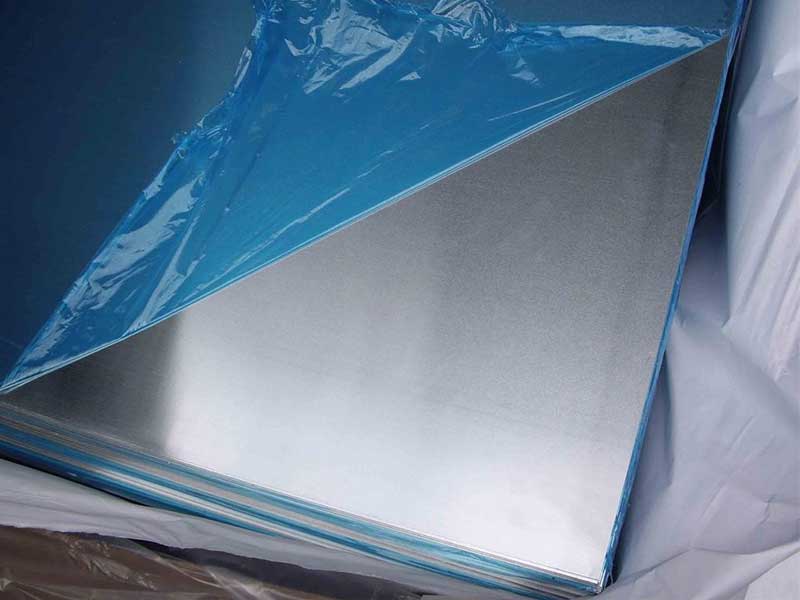Alloy 1050 1060 1100 1200 Aluminum Plate Sheet
Alloy 1050, 1060, 1100, and 1200 aluminum plate sheets are commercially pure (≥99% Al) wrought alloys offering excellent corrosion resistance, high electrical and thermal conductivity, good formability, and machinability. They are widely used in electrical, chemical, architectural, food processing, and general fabrication industries. Available in multiple tempers and thicknesses, these plates are ideal where strength is not the primary requirement but purity, conductivity, and corrosion resistance are. Typical applications include electrical busbars, heat exchangers, chemical equipment, decorative panels, kitchen equipment, and deep drawing components.
Alloy 1050, 1060, 1100, and 1200 belong to the 1xxx series of aluminum — commercially pure aluminum with minimum aluminum content typically between 99.0% and 99.9% depending on the alloy. These alloys are non-heat-treatable and derive their properties from cold working (work hardening) and temper designations (O, H12, H14, H18, etc.). They offer excellent corrosion resistance, high electrical and thermal conductivity, and outstanding ductility, making them suitable for forming and welding operations.
differences among these alloys are small variations in impurity levels and controlled additions that slightly change mechanical and electrical properties:
- 1050: Typical commercial purity (Al ≥ 99.5%)
- 1060: Higher purity (Al ≥ 99.6%) with improved conductivity
- 1100: Slightly higher mechanical strength among the group but still commercially pure (Al ≥ 99.0%)
- 1200: High purity (Al ≥ 99.0–99.5%) focused on high corrosion resistance and conductivity
Features
- High aluminum content (≥99% for most variants) — excellent purity
- Excellent corrosion resistance (especially in atmospheric and mild chemical environments)
- Very high electrical and thermal conductivity (useful for electrical components and heat sinks)
- Outstanding formability and ductility — suitable for deep drawing, bending, spinning
- Good weldability (TIG, MIG, resistance welding)
- Non-heat-treatable; strengthened only by cold working (H tempers)
- Recyclable and lightweight (density ~2.70 g/cm³)
Typical Applications
- Electrical busbars, conductors, and wiring components
- Heat exchangers, radiators, and thermal management plates
- Chemical processing equipment, storage tanks, and piping where corrosion resistance is needed
- Kitchen and food processing equipment (sheets, trays, containers)
- Architectural panels, cladding, and decorative trim
- Deep-drawn components, pressure vessels (where strength requirements are modest)
- Reflective surfaces, lighting components, and foil backing
- Laboratory equipment and tanks
Chemical Composition (typical ranges)
Note: Values are nominal; consult product certification and standards (ASTM B209, EN 573-3) for exact requirements.
| Element | 1050 (wt%) | 1060 (wt%) | 1100 (wt%) | 1200 (wt%) |
|---|---|---|---|---|
| Aluminum (Al) | ≥99.5 | ≥99.6 | ≥99.0 | ≥99.0–99.5 |
| Copper (Cu) | 0.05 max | 0.05 max | 0.05 max | 0.05 max |
| Iron (Fe) | 0.40 max | 0.35 max | 0.95 max | 0.50 max |
| Manganese (Mn) | 0.05 max | 0.05 max | 0.05–0.20 | 0.03 max |
| Magnesium (Mg) | 0.05 max | 0.05 max | 0.05 max | 0.05 max |
| Chromium (Cr) | 0.05 max | 0.05 max | 0.05 max | 0.05 max |
| Zinc (Zn) | 0.05 max | 0.05 max | 0.10 max | 0.05 max |
| Titanium (Ti) | 0.03 max | 0.03 max | 0.03 max | 0.03 max |
| Other (each) | 0.03 max | 0.03 max | 0.05 max | 0.03 max |
| Other (total) | 0.10 max | 0.05–0.20 | 0.15 max | 0.10 max |
Mechanical Properties (typical by alloy and temper)
Values are approximate and depend on temper (O = annealed; H1x/H2x/H3x = strain-hardened). Check mill certificates for certified values.
| Property | 1050-O | 1060-O | 1100-O | 1200-O |
|---|---|---|---|---|
| Tensile Strength (MPa) | 50–70 | 50–70 | 60–100 | 50–80 |
| Yield Strength (MPa) | 20–35 | 20–35 | 35–60 | 20–40 |
| Elongation (%) | 30–45 | 30–45 | 25–40 | 30–45 |
| Hardness (HB) | 20–30 | 20–30 | 25–40 | 20–30 |
| Density (g/cm³) | 2.70 | 2.70 | 2.70 | 2.70 |
| Electrical Conductivity (% IACS) | 60–65 | 61–66 | 58–63 | 60–65 |
| Thermal Conductivity (W/m·K) | 220–235 | 225–240 | 215–230 | 220–235 |
Example H-temper range (increasing strength, decreasing elongation):| Temper | Typical Tensile (MPa) | Typical Yield (MPa) | Elongation (%) ||:------:|:---------------------:|:-------------------:|:--------------:|| H12 (partial strain) | +10–20 vs O | +5–10 vs O | 10–30 || H14 (full strain) | +20–40 vs O | +10–30 vs O | 5–15 || H18 (maximum strain) | +40–70 vs O | +30–60 vs O | 1–8 |
Temper Designations & Processing
- O (annealed): Maximum ductility, lowest strength. Suitable for deep drawing and forming.
- H1x (strain-hardened, not heat treated): e.g., H11, H12 — slight cold work.
- H2x (strain-hardened and stabilized): e.g., H22 — limited strengthening.
- H3x (strain-hardened and partially annealed): e.g., H32 — combination properties.
- Common tempers: O, H12, H14, H16, H18, H22, H32.
Fabrication processes:
- Cold forming (deep drawing, bending, roll forming)
- Welding (TIG/MIG, resistance, spot)
- Machining (easier than harder alloys; use sharp tools)
- Surface finishing (anodizing limited due to high purity but possible; painting, brushing, polishing)
Available Dimensions & Formats
Typical available forms (subject to mill capabilities and customer requirements):
| Form | Typical Thickness Range | Typical Width Range | Typical Lengths |
|---|---|---|---|
| Plate/Sheet | 0.2 mm – 200 mm (sheet: 0.2–6 mm; plate: >6 mm) | Up to 2500 mm+ | Cut-to-length, coils, full mill lengths |
| Coil | 0.2 mm – 6 mm | Up to 1500–2000 mm | Coils by weight (e.g., 1–10 tons) |
| Cut-to-size / blanks | Any within plate limits | Customer specified | Customer specified |
Note: Very thick plates (>50 mm) in 1xxx alloys are less common due to lower strength; however they may be produced for specific applications where conductivity/corrosion resistance are primary.
Surface Finishes
- Mill finish (as-rolled)
- Bright annealed
- Polished / mirror
- Brushed (satin)
- Anodized (limited appearance change; anodizing thickness and color options limited compared to alloying series)
- Painted/coated (PVDF, PVF, powder coat)
Corrosion Resistance
- Excellent in atmospheric exposures and many chemical environments.
- Particularly resistant to water and many organic chemicals.
- Not recommended where chloride stress corrosion cracking is a concern (use appropriate design and corrosion allowances).
- Good service life for architectural and food contact applications.
Heat Treatment & Limitations
- 1xxx series alloys are non-heat-treatable. Strengthening is achieved by cold working (strain hardening) or by adding small alloying amounts in other series.
- Avoid high-temperature exposure that could anneal cold-worked tempers and reduce strength.
Quality Standards & Specifications
Common standards governing composition and mechanical properties:
- ASTM B209 — Aluminum and Aluminum-Alloy Sheet and Plate
- ASTM B211 — Aluminum and Aluminum-Alloy Bar, Rod, and Wire (reference for related products)
- EN 573-3 / EN 485 — European chemical composition and mechanical properties for wrought aluminum and surface finishes
- ISO 6361 — Wrought aluminum and aluminum alloy sheets, strips and plates
Handling, Storage, and Safety
- Store flat and clean to prevent surface damage and contamination.
- Protect from prolonged contact with dissimilar metals to avoid galvanic corrosion.
- Use appropriate lifting gear to avoid bending or denting thin sheets.
- Wear cut-resistant gloves and eye protection when cutting or handling.
Typical Supply & Lead Times
- Standard alloys and tempers (sheet/coils) often available from stock.
- Custom tempers, oversized widths/thicknesses, or specialized surface finishes may require mill lead time (2–8 weeks typical depending on order size and market conditions).
- Certification (mill test reports) available on request.
Why Choose These Alloys?
- Best choice where electrical/thermal conductivity, corrosion resistance, and formability are prioritized over high strength.
- Cost-effective: commercially pure aluminum is economical and recyclable.
- Versatile: suitable for a wide range of industrial, commercial, and consumer applications.
Technical Specification Quick Reference
| Item | Typical Value / Range |
|---|---|
| Density | 2.70 g/cm³ |
| Melting point | 660 °C |
| Electrical conductivity | 58–66 % IACS (varies by alloy) |
| Thermal conductivity | 215–240 W/m·K |
| Typical thickness (sheet) | 0.2–6 mm |
| Typical thickness (plate) | >6 mm to 200 mm |
| Surface hardness (HB) | 20–40 (annealed to strain-hardened) |
| Formability | Excellent (O temper) |
| Weldability | Excellent (TIG/MIG/resistance) |
| Corrosion resistance | Excellent |
If you need:
- Certified mill test reports (chemical & mechanical),
- Custom cut-to-size quotes,
- Specific temper or surface finish options,please provide dimensions, required alloy/temper, finish, and quantity — I will prepare a tailored specification and quote.
https://www.aluminumplate.net/a/alloy-1050-1060-1100-1200-aluminum-plate-sheet.html


